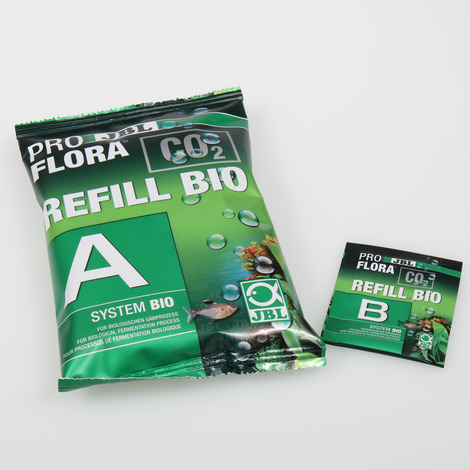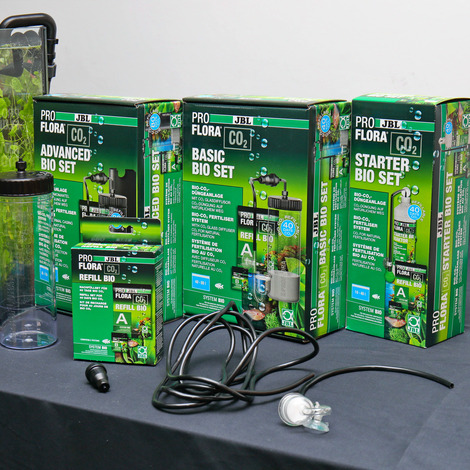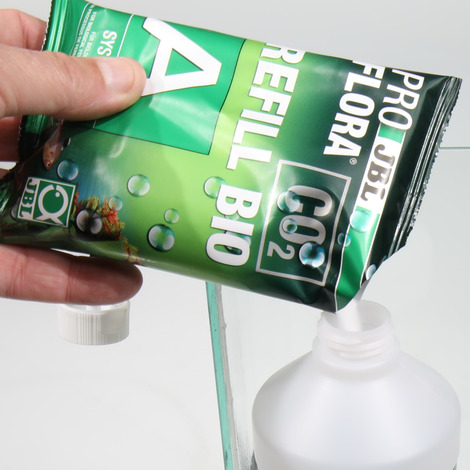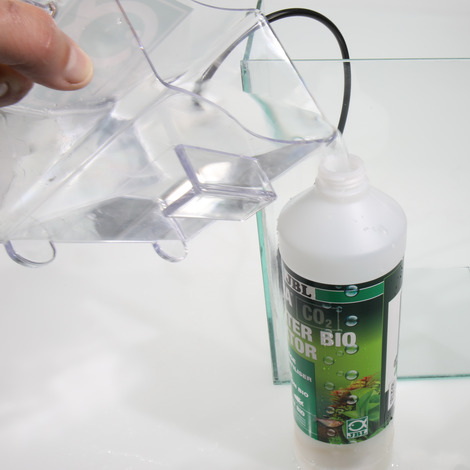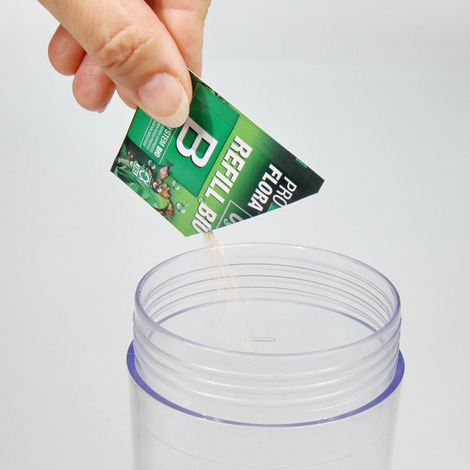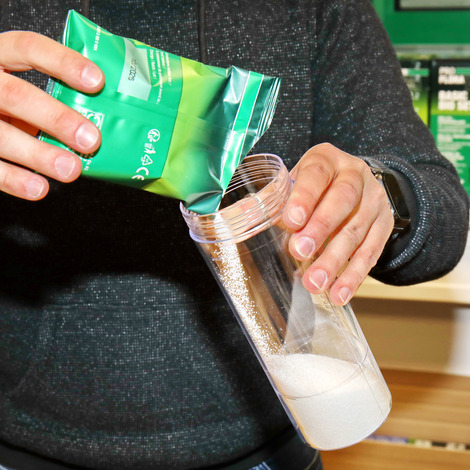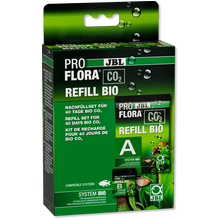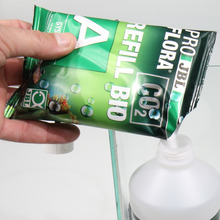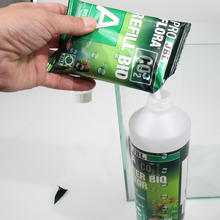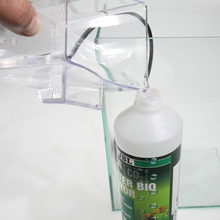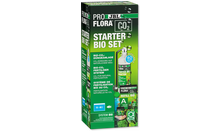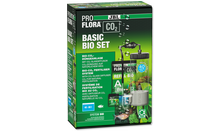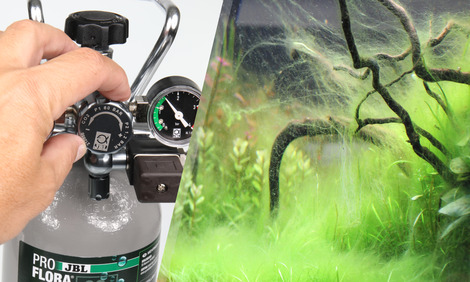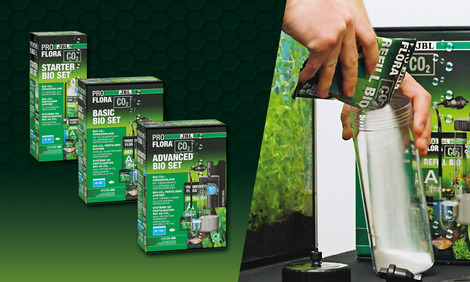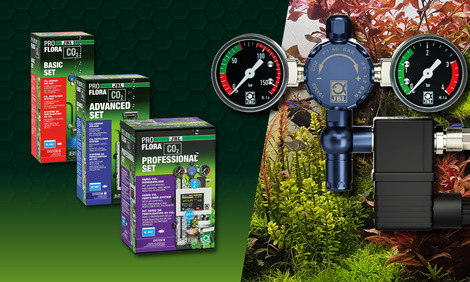Nutrition for aquarium plants
Plants provide the aquarium with vital oxygen for your aquarium inhabitants, prevent algae growth, remove pollutants, provide hiding places and reduce pathogens. Plant fertiliser systems with CO2 cylinders supply the plants with the main nutrient CO2 through the water. The plants absorb this and convert it into sugar and oxygen in photosynthesis with the help of light.
The difference between Bio-CO2 and pressurised gas cylinder CO2 systems:
Bio-CO2 systems are based on the biological process of yeast fermentation, in which CO2 is produced. Here, 2 bio-components are made to react in a reaction canister. To replenish the system after about 40 days, the reaction canister only needs to be refilled with water and the two bio-components.
In the CO2 pressurised gas cylinder system, the CO2 gas is present at about 60 bar in steel pressure cylinders. When they are empty, they can be refilled by a specialist retailer (reusable cylinders, M system) or they are disposable cylinders (U system) which are simply replaced.
It makes no difference to the plants where the CO2 comes from, whether it is from biological or pressurised cylinder systems. They grow much stronger as soon as a CO2 system is installed. The systems are of more concern to the aquarium owners, who have to decide whether they want disposable cylinders, refillable pressure cylinders or a pressureless bio system.
Caution with do-it-yourself construction!
Sugar and yeast produce the required CO2 in the fermentation process, but only for a short time and then very intensively! The JBL components contain stabilisers which allow the reaction process to run continuously and ensure CO2 production for 40 days.
JBL PROFLORA CO2 REFILL BIO
Refill set for Bio-CO2 fertiliser systems
- Refill set for Bio-CO2 fertiliser systems: 1 set supplies 30-80 l aquariums with basic plant nutrient carbon dioxide (mixed with water in the reaction canister) for 40 days
- Easy to use: put components A and B into the reaction canister, fill up with water, mix the components
- Natural, biological process: CO2 extraction through fermentation process including stabiliser for constant CO2 production
- Consists of the two components A and B
- Package contents: refill set for Bio-CO2 systems consisting of one bag of component A and one bag of component B

Visit our premium partners to fill / exchange your CO2 cylinders and purchase products from the JBL PROFLORA CO2 range.

